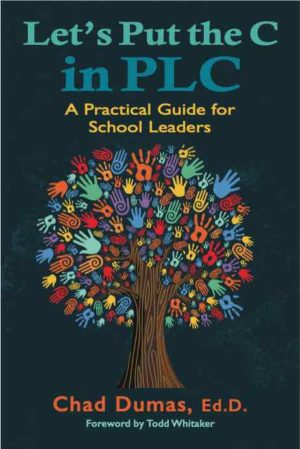The CIA: A Covert Op?
September 1, 2021
It’s been almost a full year (!) of me writing blogs based on the Amazon best-selling book and 2020 INDIES Book of the Year Finalist, Let’s Put the C in PLC: A Practical Guide for School Leaders. In my opinion, previous blog posts have laid the foundation for this and the next few posts: The core of building a collaborative environment is in doing the right work.
Doing the Right Work
Let me emphasize two key words in that previous phrase and heading.
- Doing. Building a collaborative environment is not about talking, or reading a book, or listening to some expert. It’s about DOING the work of improving our practice and results for students.
- Right (work). Having a collaborative environment will not improve student learning if we aren’t focused on the RIGHT work.
But what is the right work for us to be doing?
Building a collaborative leadership environment is one of the few ways that we KNOW works to improve student learning. Over 50 years of research supports this fact.
However, collaboration for the sake of collaboration won’t cut it. As a matter of fact, if we are collaborating on the WRONG things, we will HARM students. Michael Fullan (@MichaelFullan1) says that “groups can be powerful.” He then goes on to say that this means that “groups can be powerfully wrong, too.”
You’ve probably experienced this: the sum of the members of a group doesn’t necessarily add up. A group can be a powerful positive force, or they can be dysfunctional and toxic. We want the former.
Like you, I’ve had feelings and thoughts that it’s just better to do “my thing” with “my kids.” Working with others just slows us down and creates inefficiencies. Those who can’t do, hold a meeting. Right?
And if we’re not focused on the right work, meetings definitely feel this way. We show up, listen to someone pontificate, covertly check out our twitter, facebook or instagram feed a few times here and there, nod along (and hopefully don’t nod off!), and then go our way. This is because we’re not focused on the right work.
An Example
One district of which I’m very familiar at one point had “PLC meetings” that were managerial–district office even dictated agenda items and expected follow through (bypassing the principal, of course). Staff grumbled, as you can imagine.
Over the course of time, however, the system honed in on the ideas presented in this (and the next few) post. Over time, grumbling decreased (it never went away) and productivity and satisfaction sky-rocketed. Of course, student learning greatly improved, as well.
In order to have collaboration actually improve student performance (and feel like we’re making progress!), we have to focus on the right work.
The CIA
What is the right work?
It’s the CIA of schooling. Unlike the CIA you’re probably most familiar with, this should not be covert. It’s out in the open for all to know, see, focus upon, measure against, drive improvements, etc. It’s Curriculum, Instruction, and Assessment. The CIA.
Rick DuFour and Bob Eaker, in their work to actualize the practices of a collaborative environment, coined four critical questions some three decades ago. These four critical questions are another way of stating the CIA of schools. They are:
- What do we want students to know and be able to do?
- How will we know when students know and/or can do it?
- What will we do when students don’t know or can’t do it? and
- What will we do when students ALREADY know or can do it?
While it isn’t explicitly stated in each question,
Question 1 is all about Curriculum: What we want students to know and be able to do.
Question 2 is about Assessment: How we will know when students know and/or can do it.
And Questions 3 and 4 are about Instruction: What we will do when students can’t or already know or can do it.
The CIA, as an overt, not covert, operation.
All of the work of the school must revolve around these four critical questions in order to be sure that our efforts to build a collaborative environment will result in improved student learning.
Focus
Focusing our collaborative work on these four questions gives purpose to our collaboration. It drives our conversations and informs our decisions.
In both small and large ways, these four questions form the foundation for all of our work, and the measuring stick against which we determine success. From large-scale and standardized test results to commonly-developed teacher-made formative assessments, collaboration involves using this data to determine action steps, refine processes, and evaluate our effectiveness.
Because these four questions are so vitally important, memorize them (if you haven’t already). Use them as part of daily conversations and team meetings. Write about them in your communications with stakeholders. Make them the central part of all of your work.
Next time we’ll dig into some specifics about HOW to go about addressing each of these critical questions.
Bonus
It’s coming up on a year since the publication of my first book! Keep your eyes peeled for some giveaways and celebrations. If you don’t already, follow me on Twitter (@ChadDumas), Facebook (https://www.facebook.com/ChadDumasNextLearningSolutions), and LinkedIn (https://www.linkedin.com/in/chad-dumas-611ba51b5/).
Questions for Reflection
- To what extent do you currently use these four critical questions to drive your work?
- What steps might you take to move in this direction?
Do you have a story you’d like to share?
Comment below
(or email [email protected])
Know of someone who would appreciate this post? Share it with them!
Interested in New Posts?
(I won’t spam you–just once per month)



